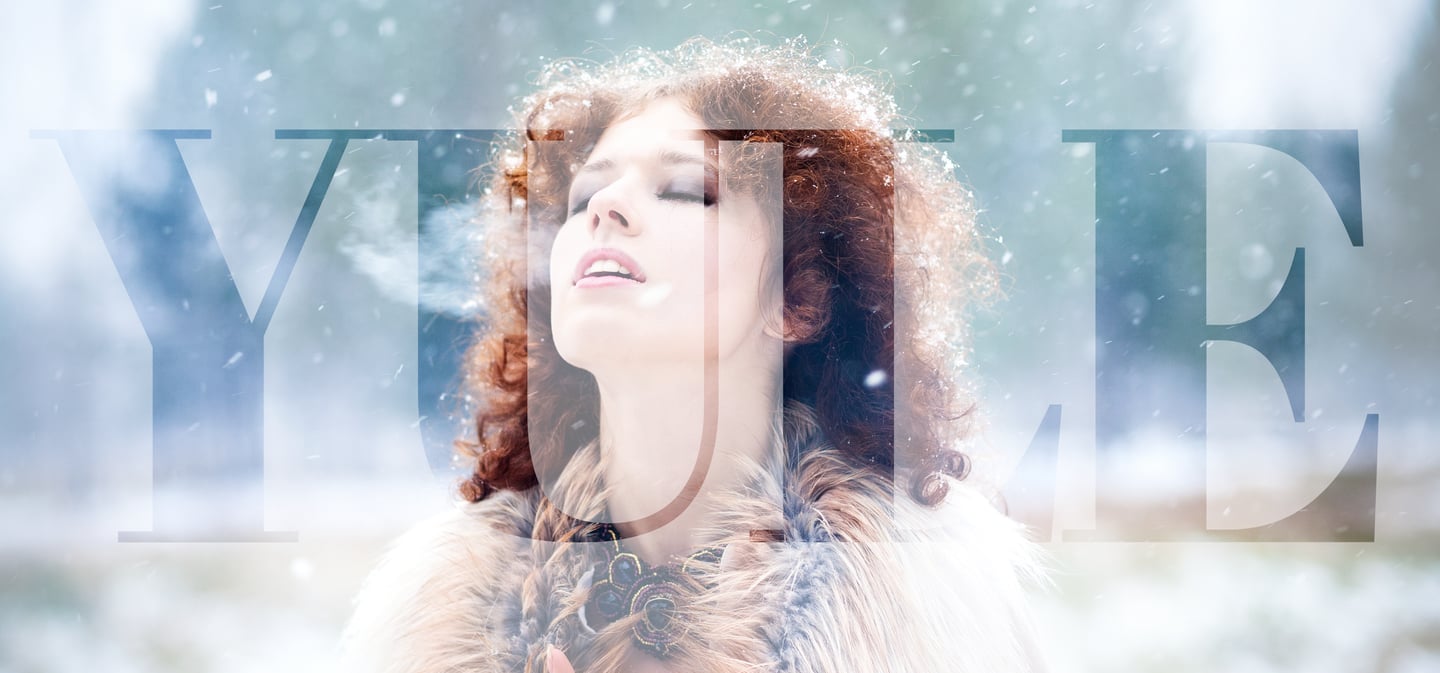The Origins and Practices of Yule:
Embracing the Return of Light


Yule, the Winter Solstice, is one of the oldest winter celebrations, marking the longest night and the rebirth of the Sun as days begin to grow longer. Celebrated around December 21st in the Northern Hemisphere, Yule originated from ancient Norse, Germanic, and Celtic traditions. It’s a time of reflection, renewal, and joy, honoring the Sun's return and the promise of warmth and growth.
In this blog, we’ll dive into the fascinating origins of Yule, its significance, and ways to bring Yule-inspired practices into modern life.


Yule’s roots go back to ancient times when winter's darkness and cold made the return of the Sun a deeply meaningful event. This time of year was a turning point, representing the victory of light over darkness and the arrival of new life.
Norse Traditions: In Norse mythology, Yule was a festival honoring the god Odin, who was known as the "Allfather." Odin would ride through the skies on his eight-legged horse Sleipnir, leading the Wild Hunt—a supernatural procession across the winter night sky. People believed Odin bestowed gifts and blessings on those who honored him during this time.
Germanic Traditions: The Germanic pagans celebrated the "Yuletide," a festival marked by feasting, gatherings, and honoring the gods, especially the Sun god. Families would burn a Yule log, a large piece of wood that burned through the night to symbolically drive away darkness and welcome the Sun’s rebirth.
Celtic Traditions: The ancient Celts also celebrated the rebirth of the Sun, honoring deities like the Oak King and the Holly King. The Oak King represented light and growth, while the Holly King represented darkness and decline. At the Winter Solstice, the Oak King would be “reborn,” overcoming the Holly King and ushering in the light half of the year.
The customs of Yule, including decorating trees, exchanging gifts, and feasting, eventually influenced Christmas traditions, making this festival a rich blend of both pagan and modern celebrations.
How to Celebrate Yule: Rituals and Traditions
Today, celebrating Yule is a beautiful way to connect with ancient wisdom, nature, and the rhythms of the Earth. Here are some meaningful ways to honor the Winter Solstice and bring Yule's spirit into your life.
Light the Yule Log
The Yule log is one of the oldest symbols of Yule. Traditionally, people would cut a log from an oak or pine tree, decorate it with holly and ivy, and burn it on the solstice night to bring warmth and drive away darkness.
Modern Practice: You can either burn a real Yule log in a fireplace or use a symbolic log decorated with candles if you don’t have a fireplace. As you light the candles, set intentions for the coming year and focus on releasing old energies.
Yule Log Blessing:
“Sacred fire, burn so bright,
Bring warmth and love on this longest night.
As you crackle and light up the night sky,
Bless this home as the old year dies.”
Decorate with Evergreens
Bringing evergreens indoors is a practice that dates back centuries. Evergreens, such as pine, holly, and ivy, symbolize everlasting life, resilience, and protection during the winter.
Modern Practice: Decorate your home with garlands of pine, wreaths of holly, or a Yule tree. Add red berries and pinecones for a festive touch, honoring nature’s gifts even in the depths of winter.
Yule Decoration Ritual:
“As I bring in this green from Earth’s wintery hold,
May my home be blessed with warmth and gold.
Protection and life, from season to season,
I honor the Earth for this blessed reason.”
Prepare a Yule Feast
Gathering for a feast was a central part of traditional Yule celebrations, representing community, abundance, and the warmth of togetherness. Foods associated with Yule include root vegetables, nuts, dried fruits, and hearty breads.
Modern Practice: Prepare a Yule meal for friends or family, filled with seasonal foods like roasted squash, spiced cider, gingerbread, and mulled wine. Before you eat, take a moment to give thanks for the abundance in your life and the return of the Sun.
Yule Feast Blessing:
“Bless this feast, and bless this night,
As we gather here by the returning light.
May love and joy fill our hearts,
As the wheel turns and a new year starts.”
Practice Divination
Yule is a powerful time to look within and seek guidance for the new year. Many ancient Yule celebrations included practices to divine insights for the coming months, such as scrying or reading runes.
Modern Practice: Use tarot cards, runes, or a scrying bowl to ask for insight into the year ahead. You can also journal any intentions or visions that come to you during this time.
Yule Divination Blessing:
“As the Sun is reborn, I seek to see,
What blessings and growth the new year holds for me.
With open heart and mind’s clear sight,
I welcome the wisdom of Yule’s deep night.”
Closing Thoughts
Yule is a reminder that even in the darkest days, light will return. Celebrating Yule brings you closer to the rhythms of nature, helps you let go of what’s no longer needed, and prepares you to welcome new growth and abundance. May this Yule bring warmth, hope, and joy to your heart as you embrace the magic of the season.
